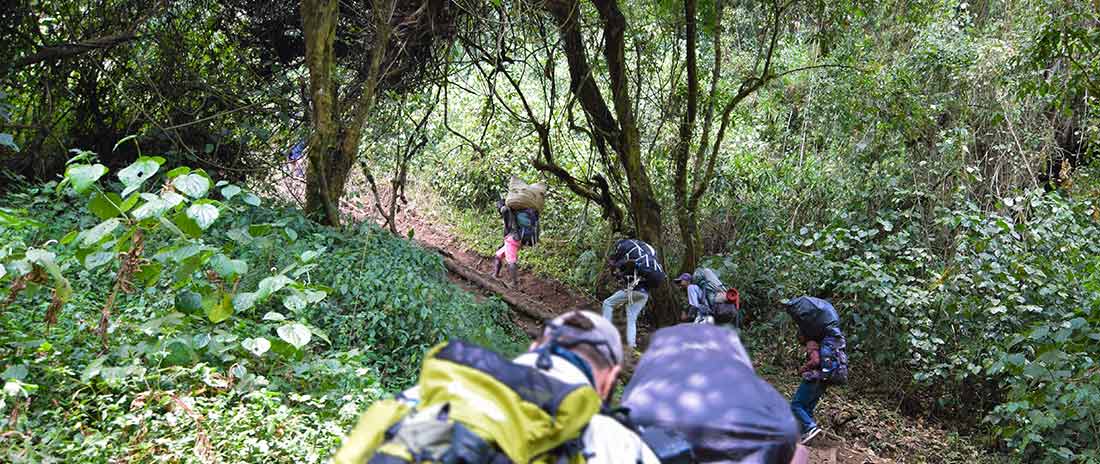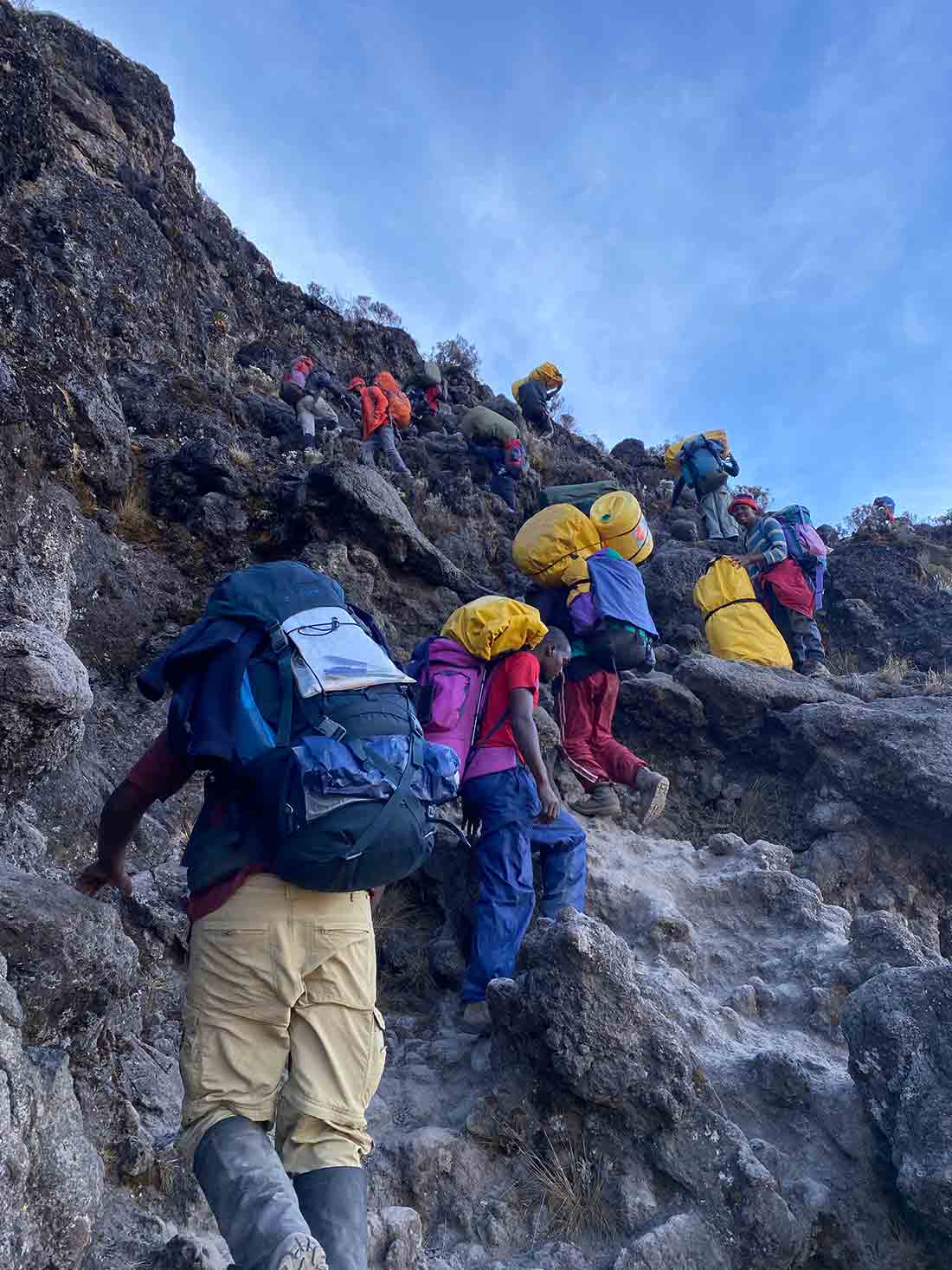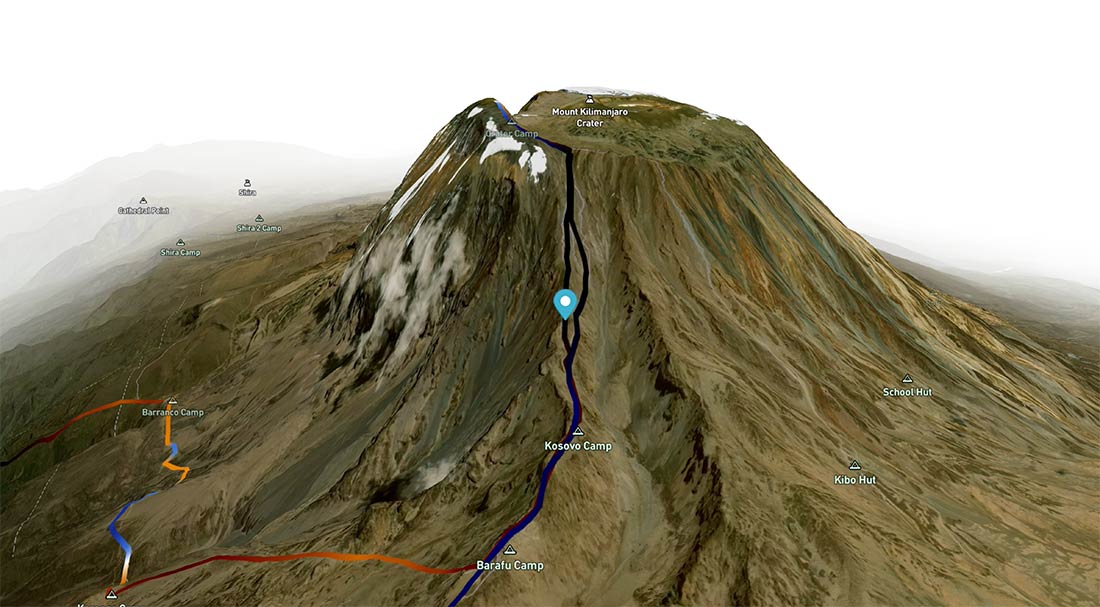Kilimanjaro, Africa’s towering beacon and one of the Seven Summits, has long captivated the imagination of intrepid adventurers. While many climbers opt for well-trodden paths like the Marangu or Machame routes, there exists a hidden gem — the Umbwe Route. The Umbwe is the shortest established route to Kilimanjaro’s summit. It holds a unique place in the mountain’s history, and its current role is often overlooked. In this exploration, we unravel the fascinating story of the Umbwe Route, shedding light on its historical significance and its less-traveled status, often relegated to the role of a resupply route.
A Journey Through Time

The Umbwe Route is steeped in history, dating back to the early days of Kilimanjaro exploration. Before the advent of established trails and routes, early climbers and explorers navigated the mountain’s challenging terrain. The Umbwe Route, with its direct ascent to the summit, became one of the original paths forged by those who sought to conquer Kilimanjaro’s majestic peak.
Challenges of the Umbwe Route: Why the Road Less Traveled?
The Umbwe route is a short, steep, and direct climb that approaches the mountain from the south. It’s the shortest route to the Southern Glaciers and the Western Breach.
The route follows a forestry track through the rainforest, steepening between the Lonzo and Umbwe Rivers.
In the first two days, climbers gain over 4,000 feet of elevation up to 13,000 at Barranco Camp.
Technical Difficulty

The Umbwe Route is steep, with challenging terrain. Climbers must negotiate rocky sections, steep ascents, and dense vegetation. The technical difficulty of the route has deterred many, making it less popular among those seeking a less demanding ascent.
Altitude

As with any route on Kilimanjaro, altitude is a significant factor. The Umbwe Route’s rapid ascent increases the risk of altitude sickness, demanding a careful approach to acclimatization. Climbers must be prepared for the physiological challenges that come with high-altitude climbing.
Limited Amenities
Unlike more popular routes like Marangu, the Umbwe Route lacks the infrastructure of huts for accommodation. There are no composting toilets along this route. This scarcity of amenities makes it less attractive to climbers who prefer the comfort of minor infrastructure.
Resupply Route
While the Umbwe Route may not be the preferred choice for climbers seeking a straightforward ascent, its role as a resupply route still makes it an important route. Today porters use it to resupply food for their mountain teams. It is the most direct approach and makes the resupply more efficient.
Navigating the Umbwe Route
Umbwe Gate to Umbwe Cave Camp (2,900m – 3,900m)
The adventure begins at the Umbwe Gate, where climbers register for their ascent. The trail meanders through dense rainforests, providing a glimpse into Kilimanjaro’s rich biodiversity.
Umbwe Cave Camp to Barranco Camp (3,900m – 3,960m)
Climbers continue through the Moorland region, ascending steep sections and traversing the Southern Icefield.
Barranco Camp to Karanga Camp (3,960m – 4,035m)
You’ll have to conquer the formidable Barranco Wall before reaching Karanga Camp. Researchers may find unique plant species and microclimates worthy of investigation.
Karanga Camp to Barafu Camp (4,035m – 4,673m)
Climbers aiming for the summit continue to Barafu Camp, their last stop before the final push.
Barafu Camp to Uhuru Peak (4,673m – 5,895m) and descent to Mweka Camp (3,100m)
The summit push begins in the early hours, offering climbers and researchers the chance to witness Kilimanjaro’s sunrise from the Roof of Africa. The descent brings both parties to Mweka Camp, where climbers celebrate their achievements.
Mweka Camp to Mweka Gate (3,100m)
Finally, the journey concludes with a descent through the rainforest, where climbers receive certificates of accomplishment.
Final Thoughts
In conclusion, the Umbwe Route on Kilimanjaro, often overshadowed by its more popular counterparts, is a route of historical significance and untapped potential. Its role as a resupply route for porters makes it an invaluable trail. Despite being rarely used as a trekking route, the Umbwe Route beckons with its rich history, diverse ecosystems, and the promise of a less traveled journey. In the heart of Kilimanjaro, the Umbwe Route awaits, ready to reveal its secrets to those willing to explore the path less taken.



